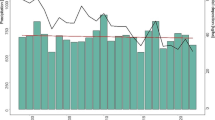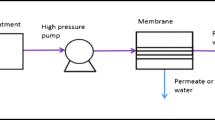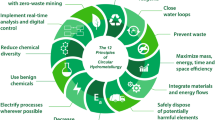Abstract
Ambitious energy targets in the 2020 European climate and energy package have encouraged many stakeholders to explore and implement measures improving the energy efficiency of water and wastewater treatment facilities. Model-based process optimization can improve the energy efficiency of wastewater treatment plants (WWTP) with modest investment and a short payback period. However, such methods are not widely practiced due to the labor-intensive workload required for monitoring and data collection processes. This study offers a multi-step simulation-based methodology to evaluate and optimize the energy consumption of the largest Italian WWTP using limited, preliminary energy audit data. An integrated modeling platform linking wastewater treatment processes, energy demand, and production sub-models is developed. The model is calibrated using a stepwise procedure based on available data. Further, a scenario-based optimization approach is proposed to obtain the non-dominated and optimized performance of the WWTP. The results confirmed that up to 5000 MWh annual energy saving in addition to improved effluent quality could be achieved in the studied case through operational changes only.







Similar content being viewed by others
Abbreviations
- ASM:
-
Activated sludge model
- bA :
-
Autotrophic decay rate
- BME:
-
Combined blower and motor efficiency
- BNRAS:
-
Biological nutrient removal activated sludge
- BOD5 :
-
5-Day biochemical oxygen demand
- BSM1:
-
Benchmark simulation model no 1
- Cc:
-
Clarification coefficient
- COD:
-
Chemical oxygen demand
- CODs :
-
Soluble chemical oxygen demand
- CODt :
-
Total chemical oxygen demand
- C p :
-
Heat capacity of air at constant pressure
- CSTR:
-
Completely stirred tank reactor
- d a :
-
Airflow per diffuser
- d d :
-
Diffuser submergence depth
- d de :
-
Diffuser density
- DO:
-
Dissolved oxygen concentration
- e :
-
Combined blower and motor efficiency
- E Ca :
-
Aeration energy consumption
- E Cm :
-
Mixing energy consumption
- E Cp :
-
Pumping energy consumption
- E Ct :
-
Total energy consumption
- E Pw :
-
Total energy produced from WAS
- EQI:
-
Effluent Quality Index
- F c :
-
Correction factor
- F f :
-
Fouling factor
- GHG:
-
Greenhouse gas
- HC-D:
-
High-load condition in dry-weather operational mode
- HC-W:
-
High-load condition in wet-weather operational mode
- H d :
-
Dynamic head
- HRT:
-
Hydraulic retention time
- H s :
-
Pumping head
- H st :
-
Static head
- I c :
-
Current absorption
- IMLR:
-
Internal mixed liquor recycle
- K :
-
Dynamic head-loss coefficient
- K c :
-
Proportional gain
- K OA :
-
Oxygen half-saturation index for autotrophic biomass
- MLE:
-
Modified Ludzack-Ettinger
- MLSS:
-
Mixed liquor suspended solids
- NC-D:
-
Normal condition in dry-weather operational mode
- OTE:
-
Oxygen Transfer Efficiency
- PAC:
-
Performance assessment criterion
- P D :
-
Delivered power blower
- P e :
-
Pump efficiency
- P FL :
-
Pipe friction loss
- PI:
-
Proportional Integral
- P PUV :
-
Power per unit volume of mixing
- PS:
-
Primary sludge
- P s :
-
Barometric pressure
- Q :
-
Pumping flow rate
- Q IMLR :
-
Internal mixed liquor recirculation flowrate
- Q N :
-
Normalized air flux
- Q RAS :
-
Return activated sludge flowrate
- R :
-
Universal gas constant
- RAS:
-
Return activated sludge
- RWS:
-
Reject water from sludge treatment units
- SCADA:
-
Supervisory control and data acquisition
- SOTE:
-
Standard oxygen transfer efficiency
- SRT:
-
Solids retention time
- STOWA:
-
Acronym for the foundation for applied water research in Netherlands
- SVI:
-
Sludge volume Index
- T a :
-
Blower inlet air temperature
- T i :
-
Integral time
- TKN:
-
Total Kjeldahl nitrogen
- TN:
-
Total nitrogen
- TP:
-
Total phosphorous
- TSS:
-
Total suspended solid
- VS:
-
Volatile solids
- VSS:
-
Volatile suspended solids
- w :
-
Mass of the airflow
- WAS:
-
Wasted activated sludge
- WWTP:
-
Wastewater treatment plant
- α:
-
The ratio of process water to clean water mass transfer coefficients
- ΔPd :
-
The pressure drop of the piping and diffuser downstream of the blower
- μA :
-
The maximum specific growth rate for autotrophic biomass
- φ :
-
Power factor
References
Amerlinck Y, De Keyser W, Urchegui G, Nopens I (2012) Realistic dynamic pumping energy models for wastewater applications. Proc Water Environ Fed 2012:4140–4156
Amerlinck Y, Bellandi G, Amaral A, Weijers S, Nopens I (2016) Detailed off-gas measurements for improved modelling of the aeration performance at the WWTP of Eindhoven. Water Sci Technol 74:203–211
Balku S, Berber R (2006) Dynamics of an activated sludge process with nitrification and denitrification: start-up simulation and optimization using evolutionary algorithm. Comput Chem Eng 30:490–499
Banks C (2009) Optimising anaerobic digestion: evaluating the potential for anaerobic digestion to provide energy and soil amendment. Univ Read 39
Bellandi G, Porro J, Senesi E, Caretti C, Caffaz S, Weijers S, Nopens I, Gori R (2018) Multi-point monitoring of nitrous oxide emissions in three full-scale conventional activated sludge tanks in Europe. Water Sci Technol 77:880–890
Beraud B (2009) Methodology for the optimization of wastewater treatment plant control laws based on modeling and multi-objective genetic algorithms (PhD Thesis). Université Montpellier II-Sciences et Techniques du Languedoc
Borzooei S, Zanetti M, Genon G, Ruffino B, Godio A, Campo G, Panepinto D, Lorenzi E, De Ceglia M, Binetti R (2016) Modelling and calibration of the full scale WWTP with data scarcity, in: proceedings of international symposium on sanitary and environmental engineering, Rome
Borzooei S, Zanetti MC, Lorenzi E, Scibilia G (2017) Performance investigation of the primary clarifier- case study of castiglione torinese, In: Lecture notes in civil engineering. pp. 138–145. https://doi.org/10.1007/978-3-319-58421-8_21
Borzooei S, Amerlinck Y, Abolfathi S, Panepinto D, Nopens I, Lorenzi E, Meucci L, Zanetti MC (2019) Data scarcity in modelling and simulation of a large-scale WWTP: stop sign or a challenge. J Water Process Eng 28:10–20
Caivano M, Bellandi G, Mancini IM, Masi S, Brienza R, Panariello S, Gori R, Caniani D (2017) Monitoring the aeration efficiency and carbon footprint of a medium sized WWTP: Experimental results on oxidation tank and aerobic digester. Environ Technol 38:629–638
Camargo JA, Alonso Á (2006) Ecological and toxicological effects of inorganic nitrogen pollution in aquatic ecosystems: a global assessment. Environ Int 32:831–849
Cano R, Pérez-Elvira SI, Fdz-Polanco F (2015) Energy feasibility study of sludge pretreatments: A review. Appl Energy 149:176–185
Cantwell JC (2015) Overview of state energy reduction programs and guidelines for the wastewater sector. Water Intell Online 9. https://doi.org/10.2166/9781780403397
Coen F, Petersen B, Vanrolleghem PA, Vanderhaegen B, Henze M (1998) Model-based characterisation of hydraulic, kinetic and influent properties of an industrial WWTP. Water Sci Technol 37:317–326
Copp JB (2002) The COST simulation benchmark: description and simulator manual: A product of COST action 624 and COST action 682. EUR-OP
Descoins N, Deleris S, Lestienne R, Trouvé E, Maréchal F (2012) Energy efficiency in waste water treatments plants: optimization of activated sludge process coupled with anaerobic digestion. Energy 41:153–164
Dotro G, Langergraber G, Molle P, Nivala J, Puigagut J, Stein O, von Sperling M (2017) Treatment wetlands. Water Intell Online 16:9781780408774. https://doi.org/10.2166/9781780408774
EEC Council (1991) Council directive 91/271/EEC of 21 May 1991 concerning urban waste-water treatment. EEC Council Directive
Elías-Maxil JA, Van Der Hoek JP, Hofman J, Rietveld L (2014) Energy in the urban water cycle: actions to reduce the total expenditure of fossil fuels with emphasis on heat reclamation from urban water. Renew Sust Energ Rev 30:808–820
(2013) Eurostat. In: Energy, transport and environment indicators 2013. Eurostat pocketbooks
Fikar M, Chachuat B, Latifi MA (2005) Optimal operation of alternating activated sludge processes. Control Eng Pract 13:853–861
Foladori P, Vaccari M, Vitali F (2015) Energy audit in small wastewater treatment plants: Methodology, energy consumption indicators, and lessons learned. Water Sci Technol 72:1007–1015
Friedrich E, Pillay S, Buckley CA (2009) Environmental life cycle assessments for water treatment processes—a South African case study of an urban water cycle. Water SA 35
Frijns J, Hofman J, Nederlof M (2013) The potential of (waste) water as energy carrier. Energy Convers Manag 65:357–363
Funamizu N, Iida M, Sakakura Y, Takakuwa T (2001) Reuse of heat energy in wastewater: implementation examples in Japan. Water Sci Technol 43:277–285
Guerrini A, Romano G, Indipendenza A (2017) Energy efficiency drivers in wastewater treatment plants: a double bootstrap DEA analysis. Sustain Switz 9. https://doi.org/10.3390/su9071126
Henze M, Gujer W, Mino T, Van Loosdrecht MCM (2000) Activated sludge models ASM1, ASM2, ASM2d and ASM3: Scientific and technical report no. 9. IWA task group on mathematical modelling for design and operation of biological wastewater treatment. IWA publishing, London
Hulsbeek JJW, Kruit J, Roeleveld PJ, Van Loosdrecht MCM (2002) A practical protocol for dynamic modelling of activated sludge systems. Water Sci Technol 45:127–136
Hur DS (1994) A computer program for optimal aeration system design for activated sludge treatment plants (Master’s thesis). Citeseer
IRSA C (1994) Metodi analitici per le acque. Ist. Poligr. E Zecca Dello Stato Roma
Kim Y-H, Yoo C, Lee I-B (2008) Optimization of biological nutrient removal in a SBR using simulation-based iterative dynamic programming. Chem Eng J 139:11–19
Kiselev A, Magaril E, Magaril R, Panepinto D, Ravina M, Zanetti MC (2019) Towards circular economy: evaluation of sewage sludge biogas solutions. Resources 8:91
Kristensen GH, Jansen JLC, Jørgensen PE (1998) Batch test procedures as tools for calibration of the activated sludge model—a pilot scale demonstration. Water Sci Technol 37:235–242. https://doi.org/10.1016/S0273-1223(98)00113-9
Leeuw EJ, Kramer JF, Bult BA, Wijcherson MH (1996) Optimization of nutrient removal with on-line monitoring and dynamic simulation. Water Sci Technol 33:203–209
Martin C, Vanrolleghem PA (2014) Analysing, completing, and generating influent data for WWTP modelling: a critical review. Environ Model Softw 60:188–201
Martinello N (2013) Integrating experimental analyses and a dynamic model for enhancing the energy efficiency of a high-loaded activated sludge plant. Master 125
Mueller JA, Boyle WC, William C, Johannes PH (2002) Aeration: Principles and practice
Murphy KL, Boyko BI (1970) Longitudinal mixing in spiral flow aeration tanks. J Sanit Eng Div 96:211–221
Nelder JA, Mead R (1965) A simplex method for function minimization. Comput J 7:308–313. https://doi.org/10.1093/comjnl/7.4.308
Nguyen TKL, Ngo HH, Guo W, Chang SW, Nguyen DD, Nghiem LD, Liu Y, Ni B, Hai FI (2019) Insight into greenhouse gases emissions from the two popular treatment technologies in municipal wastewater treatment processes. Sci Total Environ 671:1302–1313
Nopens I, Benedetti L, Jeppsson U, Pons MN, Alex J, Copp JB, Gernaey KV, Rosen C, Steyer JP, Vanrolleghem PA (2010) Benchmark simulation model no 2:finalisation of plant layout and default control strategy. Water Sci Technol 62:1967–1974. https://doi.org/10.2166/wst.2010.044
Panepinto D, Fiore S, Zappone M, Genon G, Meucci L (2016) Evaluation of the energy efficiency of a large wastewater treatment plant in Italy. Appl Energy 161:404–411. https://doi.org/10.1016/j.apenergy.2015.10.027
Reinders M, Greditgk-Hoffamnn S, Risse H, Lange M (2012) Solution approaches for energy optimization in the water sector. In: IWA world congress on water, climate and energy, Dublin, Ireland, pp 13–18
Roeleveld PJ, Van Loosdrecht MCM (2002) Experience with guidelines for wastewater characterisation in the Netherlands. Water Sci Technol:77–87. https://doi.org/10.2166/wst.2002.0095
Rosso D, Iranpour R, Stenstrom MK (2005) Fifteen years of Offgas transfer efficiency measurements on fine-pore aerators: key role of sludge age and normalized air flux. Water Environ Res 77:266–273. https://doi.org/10.2175/106143005x41843
Ruffino B, Campo G, Genon G, Lorenzi E, Novarino D, Scibilia G, Zanetti M (2015) Improvement of anaerobic digestion of sewage sludge in a wastewater treatment plant by means of mechanical and thermal pre-treatments: performance, energy and economical assessment. Bioresour Technol 175:298–308. https://doi.org/10.1016/j.biortech.2014.10.071
Salem S, Berends D, Heijnen JJ, van Loosdrecht MCM (2002) Model-based evaluation of a new upgrading concept for N-removal. Water Sci Technol 45:169–176. https://doi.org/10.2166/wst.2002.0104
Snowling S (2016) GPS-X Technical reference. Hydromantis Environmental Software, Hamilton, Ontario
Takács I, Vanrolleghem PA (2006) Elemental balances in activated sludge modelling. IWA Publ, pp 1–8
Takács I, Patry GG, Nolasco D (1991) A dynamic model of the clarification-thickening process. Water Res 25:1263–1271
US EPA R R E L (1989) Design manual: fine pore aeration systems, U.S. environmental protection agency, Office of Research and Development, Center for Environmental Research Information.
US EPA (2012) State and local climate and energy program: water/wastewater. Available: http://www.epa.gov/statelocalclimate/local/topics/water.html
Venkatesh G, Brattebø H (2011) Energy consumption, costs and environmental impacts for urban water cycle services: case study of Oslo (Norway). Energy 36:792–800
Acknowledgments
This research was financially supported by Società Metropolitana Acque Torino (SMAT). The authors wish to thank SMAT managing, laboratory, maintenance, and operation personnel for their engagement and cooperation during the sampling campaigns of this project.
Author information
Authors and Affiliations
Corresponding author
Ethics declarations
Conflict of interest
The authors declare that they have no conflict of interest.
Additional information
Responsible Editor: Philippe Garrigues
Publisher’s note
Springer Nature remains neutral with regard to jurisdictional claims in published maps and institutional affiliations.
Rights and permissions
About this article
Cite this article
Borzooei, S., Amerlinck, Y., Panepinto, D. et al. Energy optimization of a wastewater treatment plant based on energy audit data: small investment with high return. Environ Sci Pollut Res 27, 17972–17985 (2020). https://doi.org/10.1007/s11356-020-08277-3
Received:
Accepted:
Published:
Issue Date:
DOI: https://doi.org/10.1007/s11356-020-08277-3




